Destination Reports, Expert Advice, General
Summer-run Steelhead on the Fly
Every Province in Canada has a prized game fish that every angler dreams of hooking in their lifetime. For British Columbians this fish is undoubtedly the sleek hard-fighting steelhead. To take it one step further, the wholly grail of fish is the world-renowned summer-run steelhead. Unlike winter-run steelhead that return to river systems from late December to late March, our summer-run steelhead return to northern river systems as early as July when many rivers are still in freshet. Not only are these fish beautiful but once hooked the battle is second to none as they take to the air in efforts to shake the barbless hook. With a reputation of being such a hard fighting fish, anglers come to BC from around the world in hopes of encountering one of these incredible species of fish.

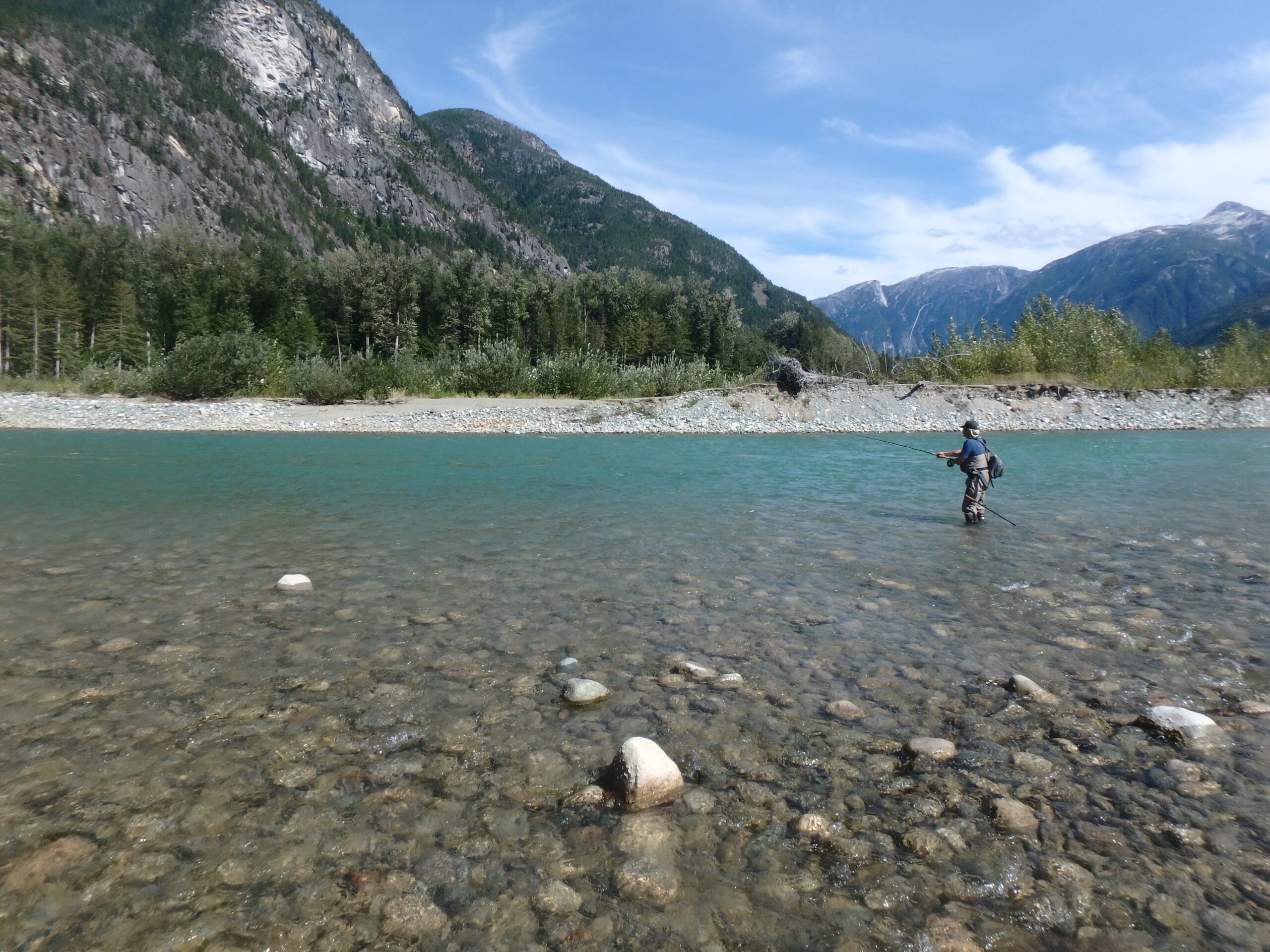
Reading the water
It’s one thing to have all the right gear when you arrive on a river, but it is even more important to know how to use the gear to its maximum potential when targeting these often-selective fish. A positive characteristic of the summer-run steelhead is the fact they will often leave the bottom to pursue a fly on the surface. As for winter steelhead it is unheard of for them to take something off the surface. When working a run for the first time on an outing, the last thing you want to do is jump in the water and start wading up to your chest. It is not uncommon to find steelhead holding in water that barely covers their heads. Many anglers find this out the hard way while wading in and spooking fish before they have a chance to make the first cast. Many avid steelhead anglers will make their first cast while standing back several feet from the waterline, once the skinny water is covered then they will slowly work their way further out in the river.
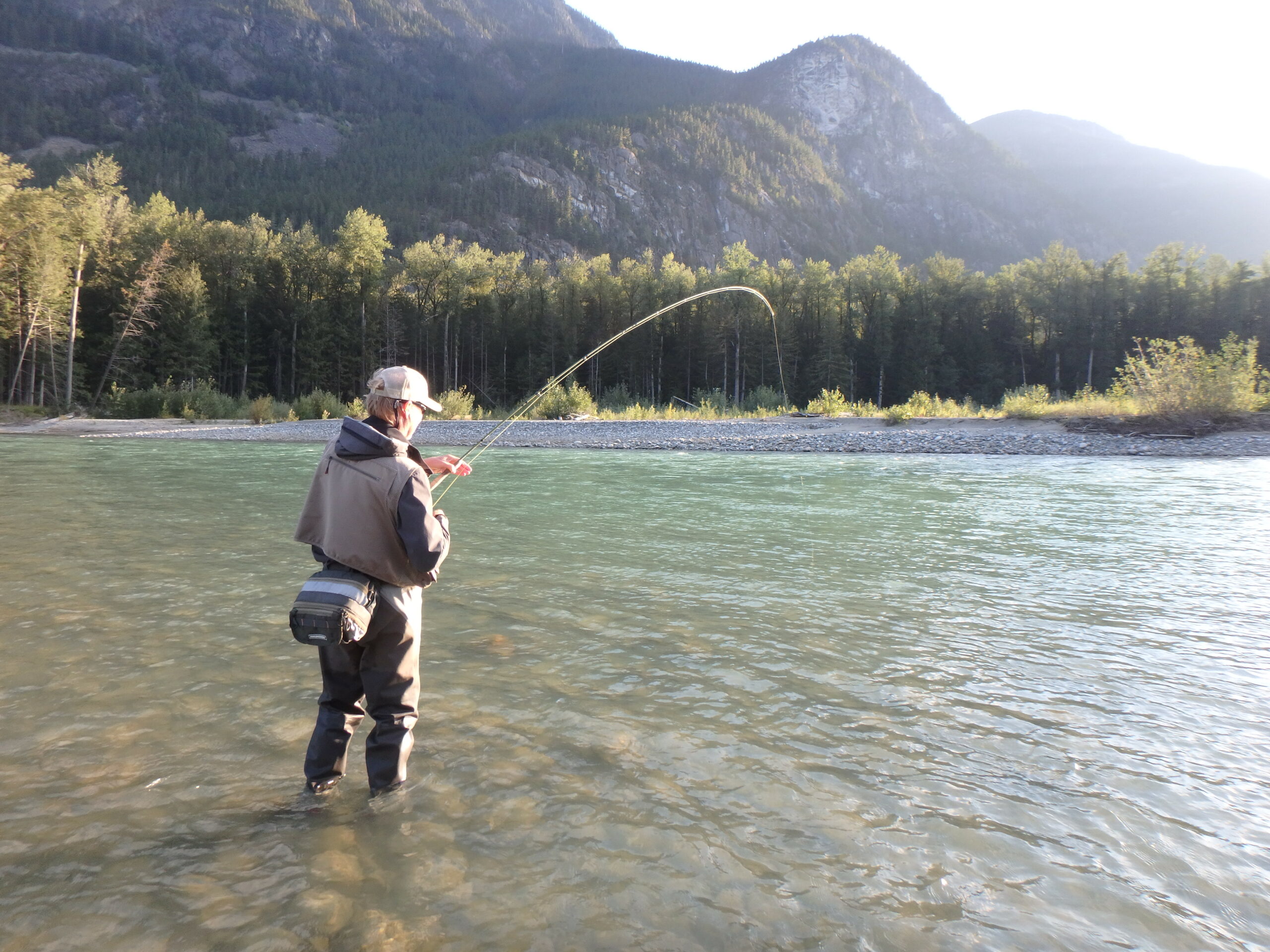
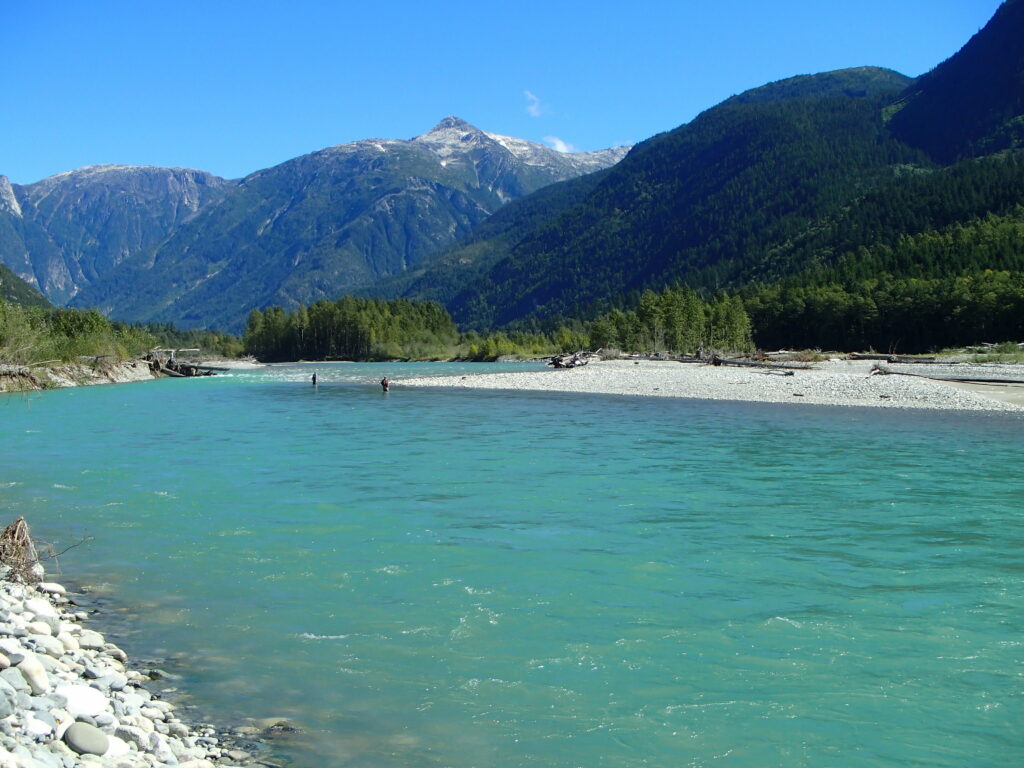
A typical run consists of a head, body and a tail-out and all need to be covered efficiently. Starting at the head of the run, work your fly through the water closest to your shoreline. Once the water closest to the shore has been covered, cast a little further out fanning that body of water until you work the far bank. If the river is wide this may require a little wading, which is fine as you have already covered the skinny water in front of you. After the water has been thoroughly covered move down river a few feet and start the same process all over again. If the water looks unfishable due to speed or depth, simply pass it by looking for some more manageable water. Many times, when you come across an area holding fish you will pick one up on the first cast as summer-run steelhead are known to be aggressive.
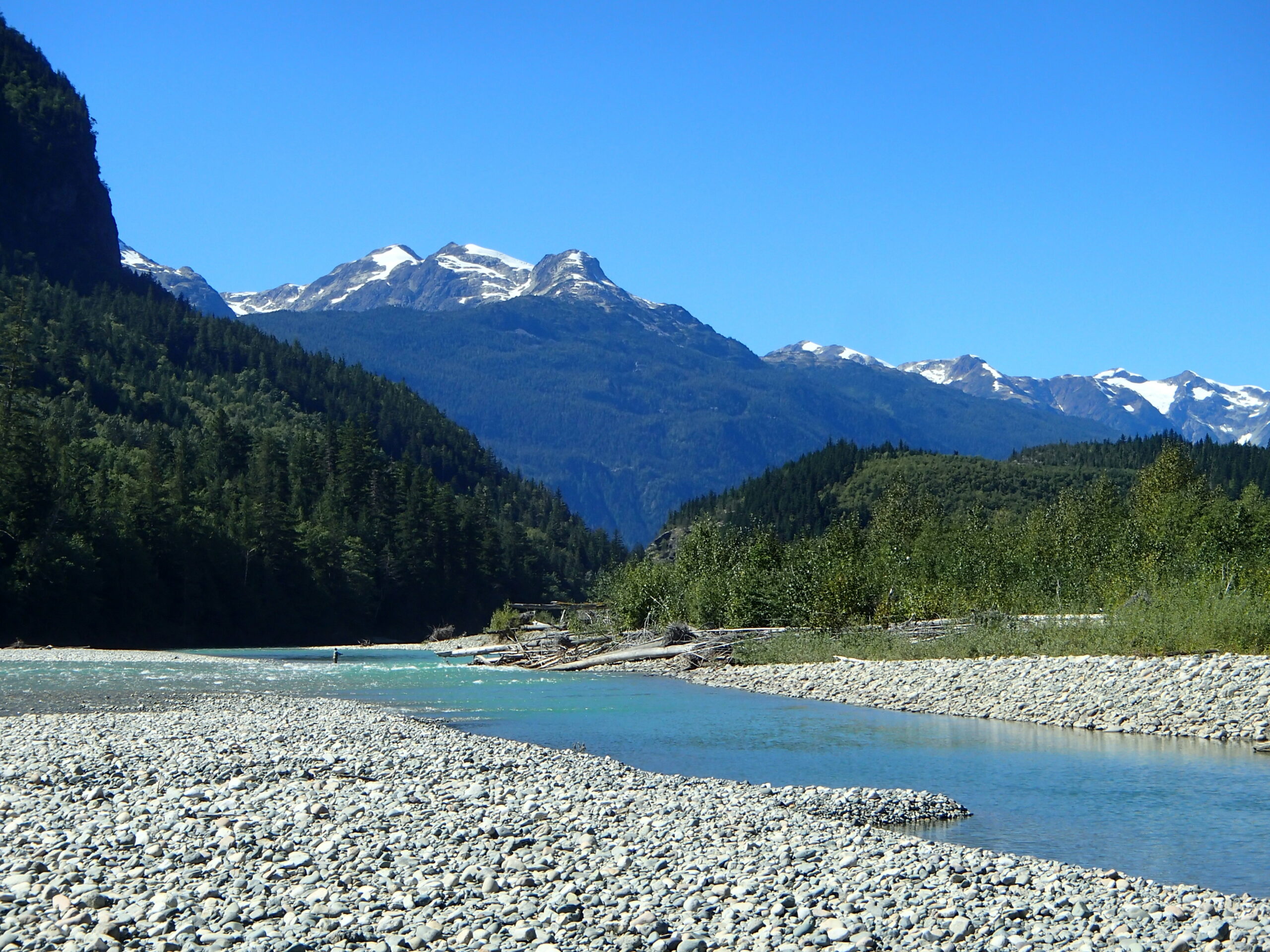
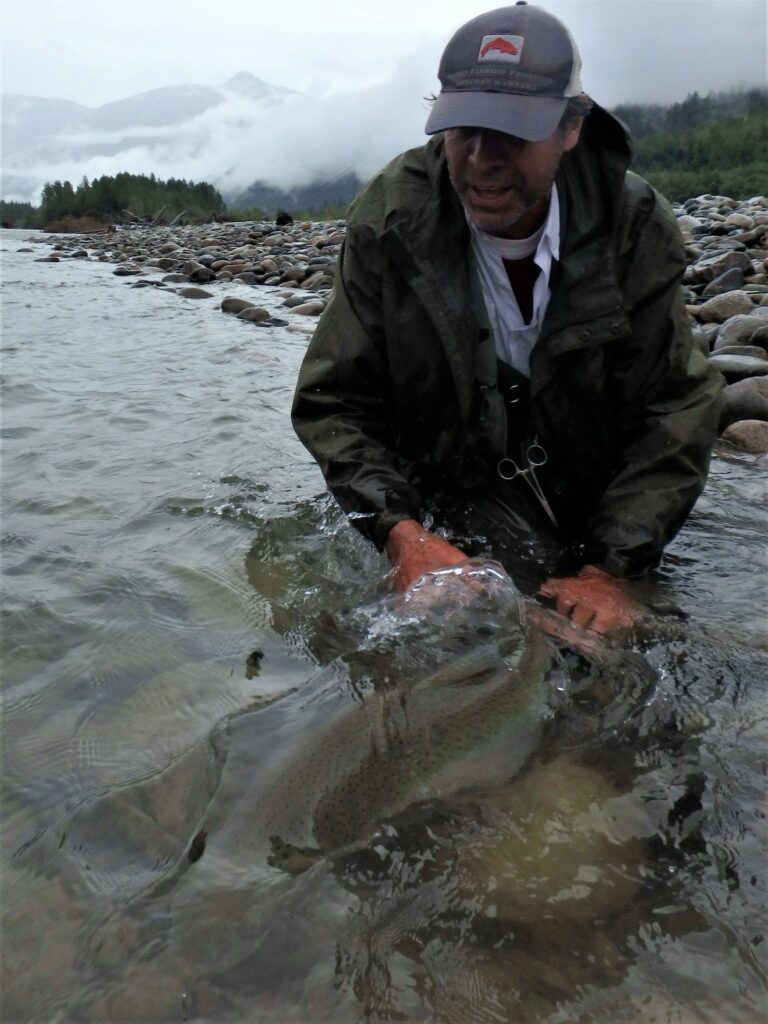
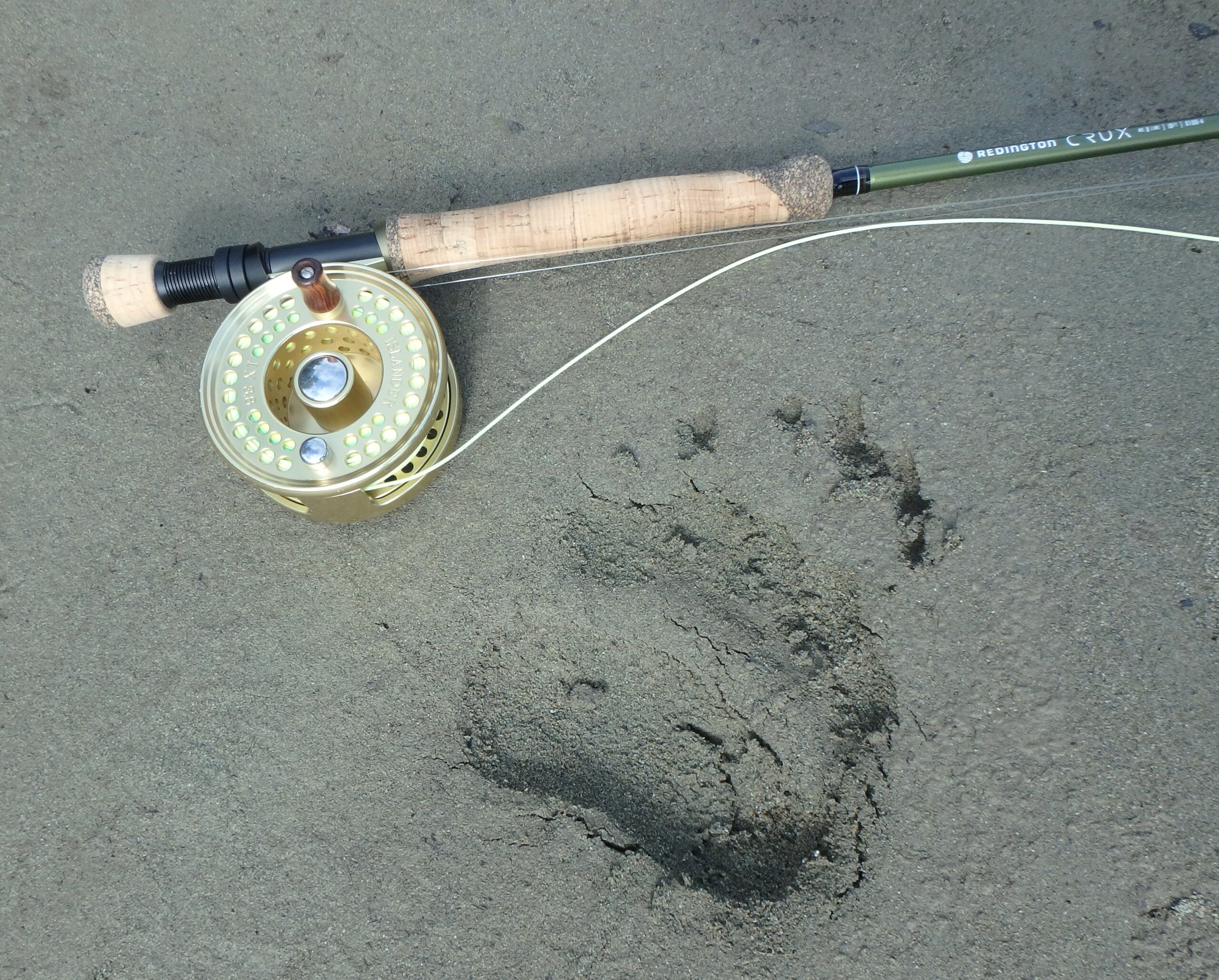
Fly gear for summer-run steelhead
One of the biggest changes when pursuing steelhead with fly gear over the past couple decades has been the gravitation towards two-handed rods. These rods have been popular throughout Europe for decades but took a little longer to catch on here in North America. Two handed rods have become popular in BC due to the fact they can make extremely long casts with little effort. That all said I still like to pull out a single-handed rod when covering smaller river systems. Of recent years a great compromise has appeared on the market and goes by the name of a switch rod. A switch rod generally falls somewhere between the two rods in length and can be used comfortably in smaller river systems.
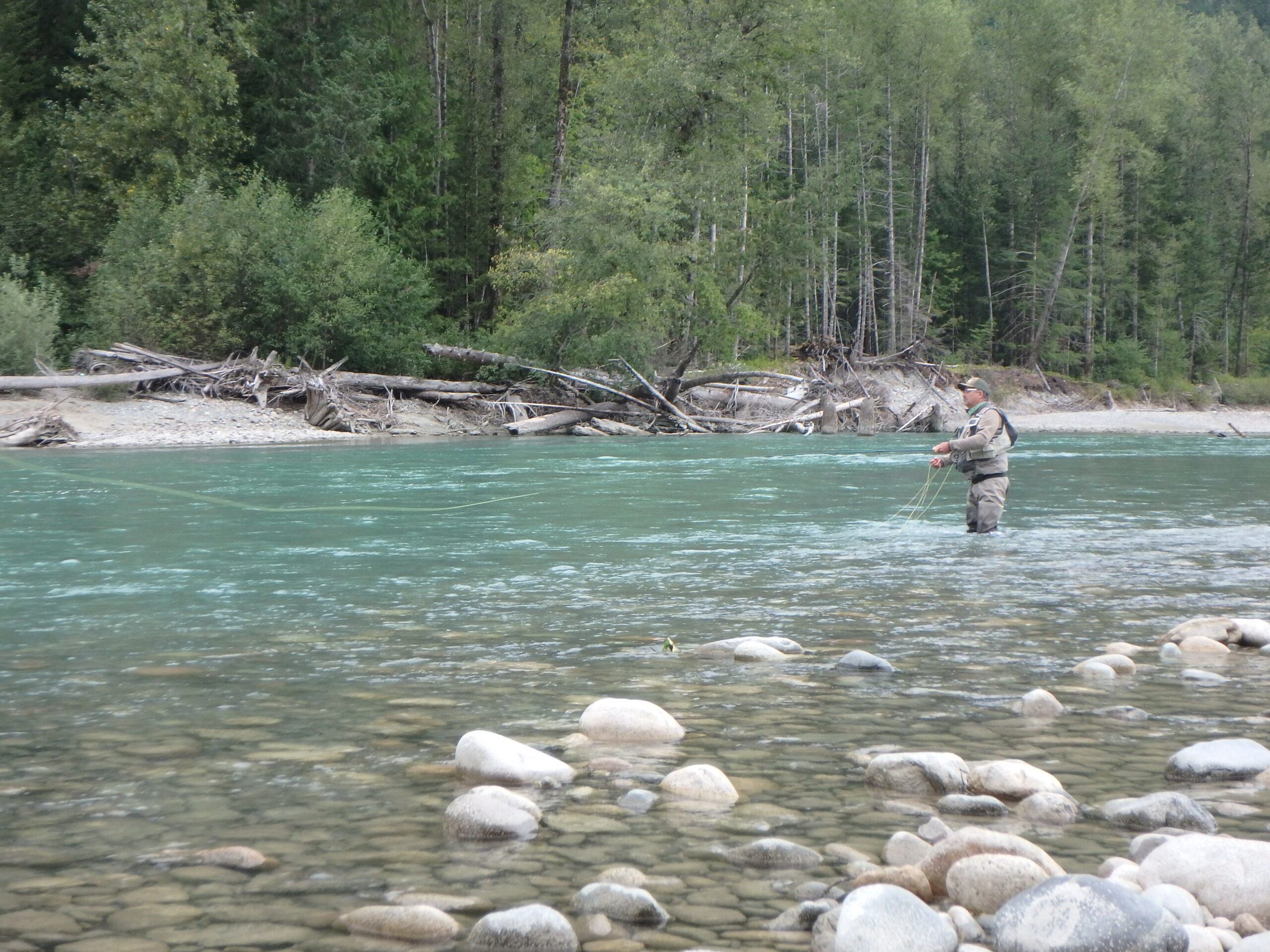
Over the years I have experimented with different weights of rods but have finally dialed in on an eight-weight outfit for summer-run steelhead. Whether it is a single or double handed rod. An eight-weight outfit is ideal for landing even larger steelhead in any river conditions. Anything under an eight weight is simply too hard on a fish that is going to be released and anything heavier is harder on the angler. Ideally the objective is to get the fish to the shoreline in a reasonable amount of time allowing it to still have enough energy to swim away. When it comes to prized fish like steelhead, we all want to keep the mortality to an absolute minimum.
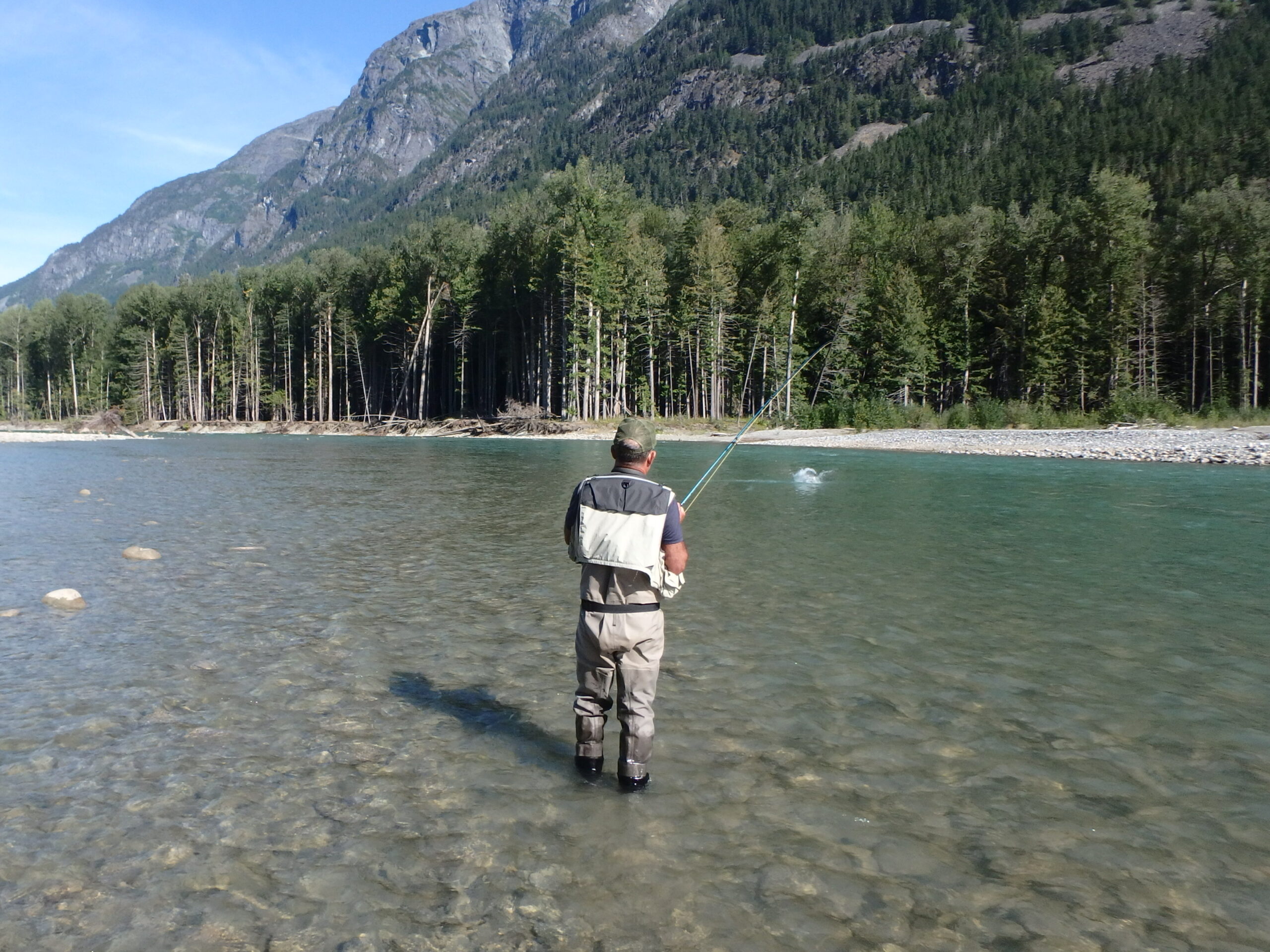
All that said the biggest misconception about steelheading is that the angler needs to be able to cast a country mile to have any chance of hooking a fish. There is truth to the fact that a good cast will better your odds as your line will be in the water longer, but many steelhead are hooked in the skinny water just down river from where the angler is standing. For that reason, I have found a nine or ten-foot eight-weight single-handed rod works wonders on smaller river systems like the Coquihalla or Chehalis. When working a fly on larger river systems like the Thompson a Spey rod is a better choice to cover water. A common two-handed rod for steelhead would be an eight-weight rod around 13 ft in length.
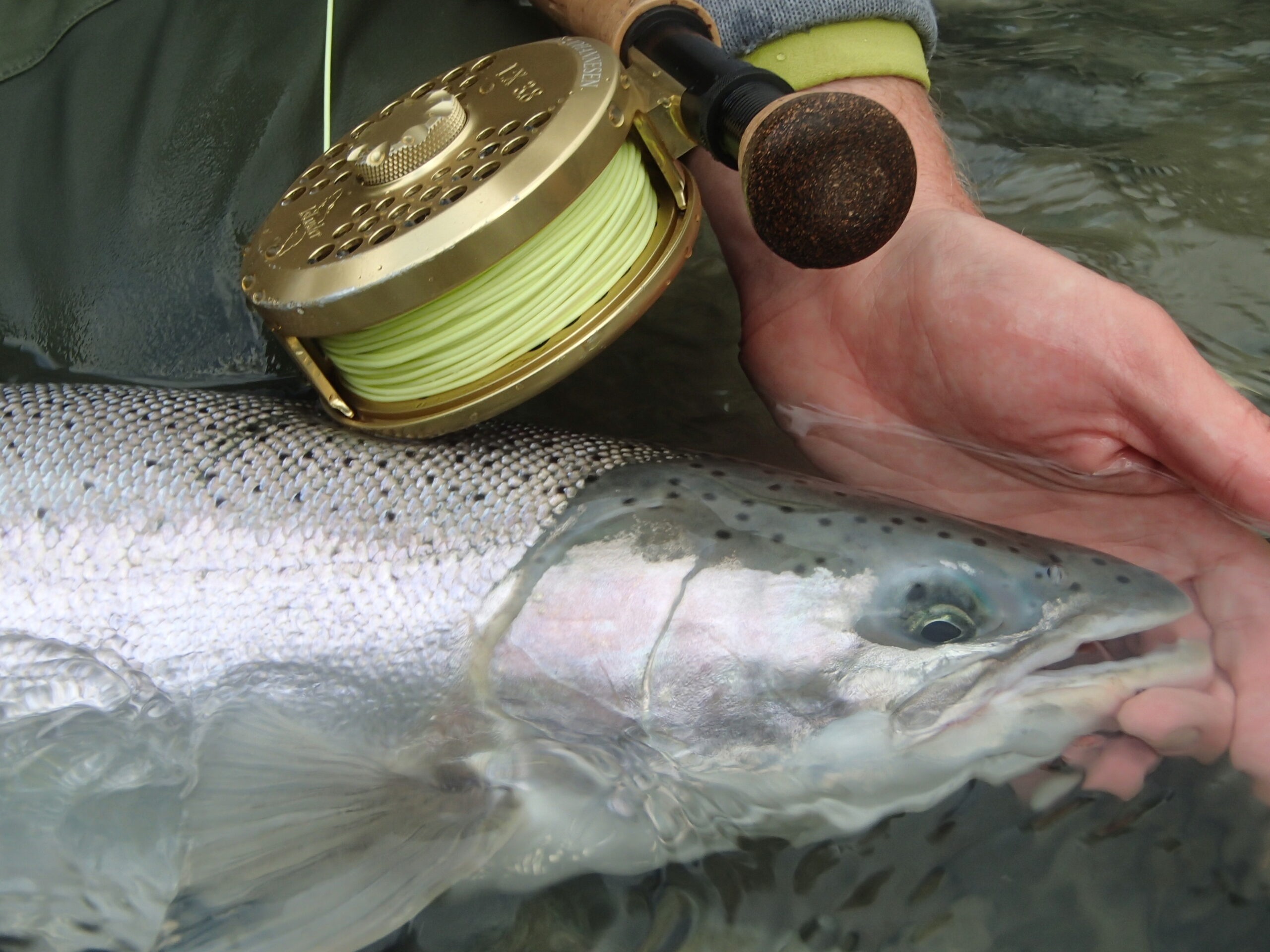
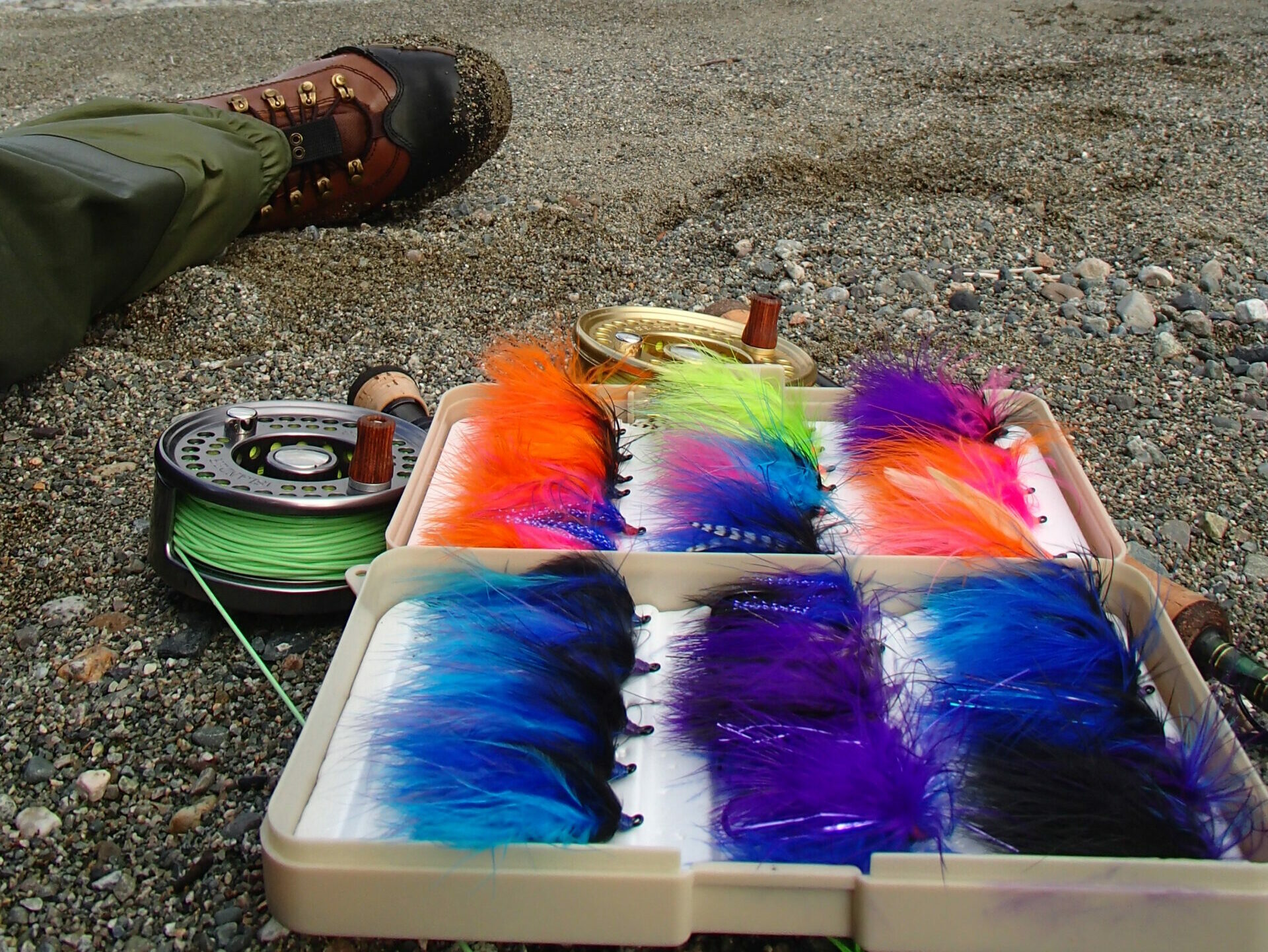
Flies for summer-run Steelhead
Over the years steelhead flies have changed quite dramatically with many traditional flies being replaced with intruder style flies and other bright flashy patterns with stinger hooks. In saying that many of the old school steelhead anglers still prefer the basic, traditional fly patterns over the bright flashy ones. A fairly basic rule of thumb is to use larger patterns in fast or colored water. You will also often hear anglers say bright day bright flies and dark day dark flies. The main object being is to draw attention to the offerings our flies need to be visible even when the water clarity is not good.
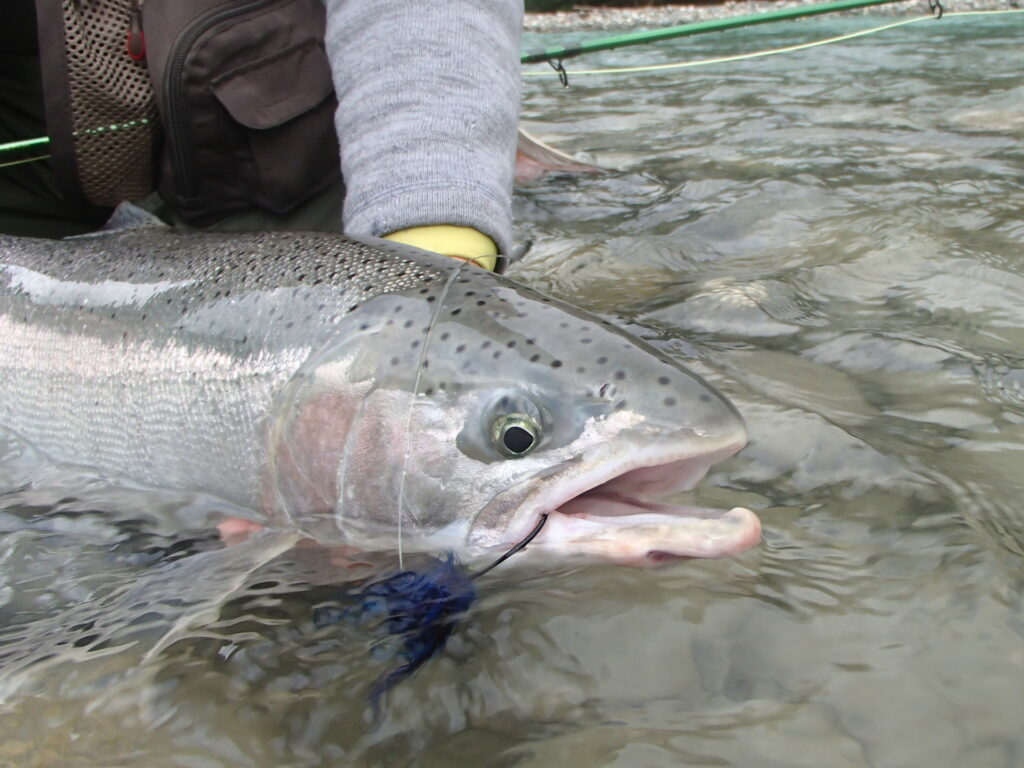
Even with all the bright colorful patterns on the market today, one of the most productive colors is still black. Flies like the black General Practitioner and Green-butt Skunk will never grow old as they consistently catch fish in any river system. As for colored traditional patterns, the Umpqua and the General Practitioner also catch fish is nearly any river system throughout BC. Some of the more popular colors for summer-run steelhead includes orange, blue, pink, purple and black. By simply using marabou as the main wing on the fly the combinations are literally endless. A little flash or sparkle can even be added to the old school patterns to make them a little more current as flies go.
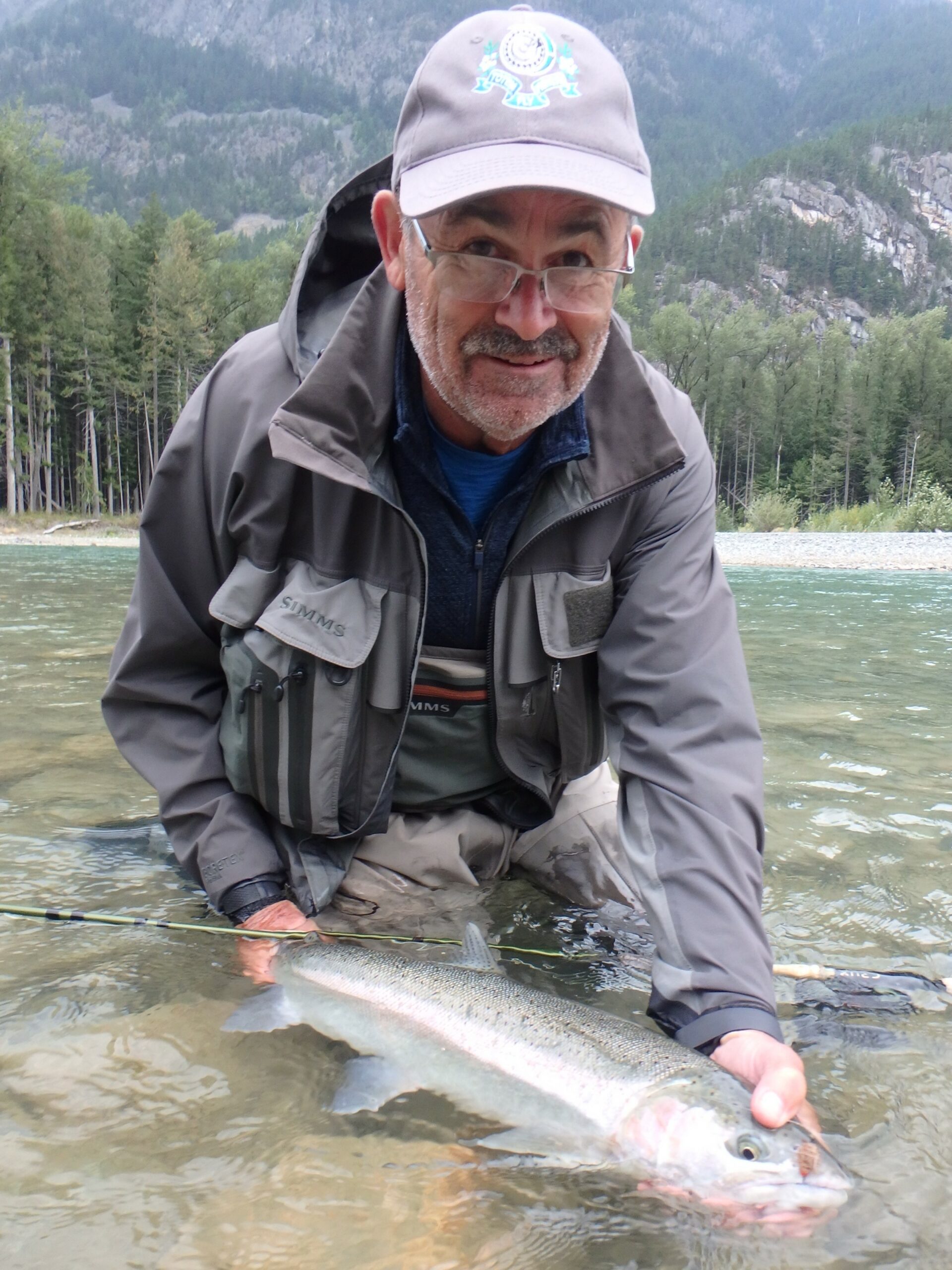
When it comes to targeting summer-run steelhead, dries flies are a must to have in your collection before heading out on any trip to the river. Sedge patterns, steelhead bees and greased liners are all flies that can draw a fish to the surface. These flies are best fished swinging them across tail-out in depths from two to six feet deep. As for size they can be productive when tied on a hook as small as a #10 to as large as a #4.
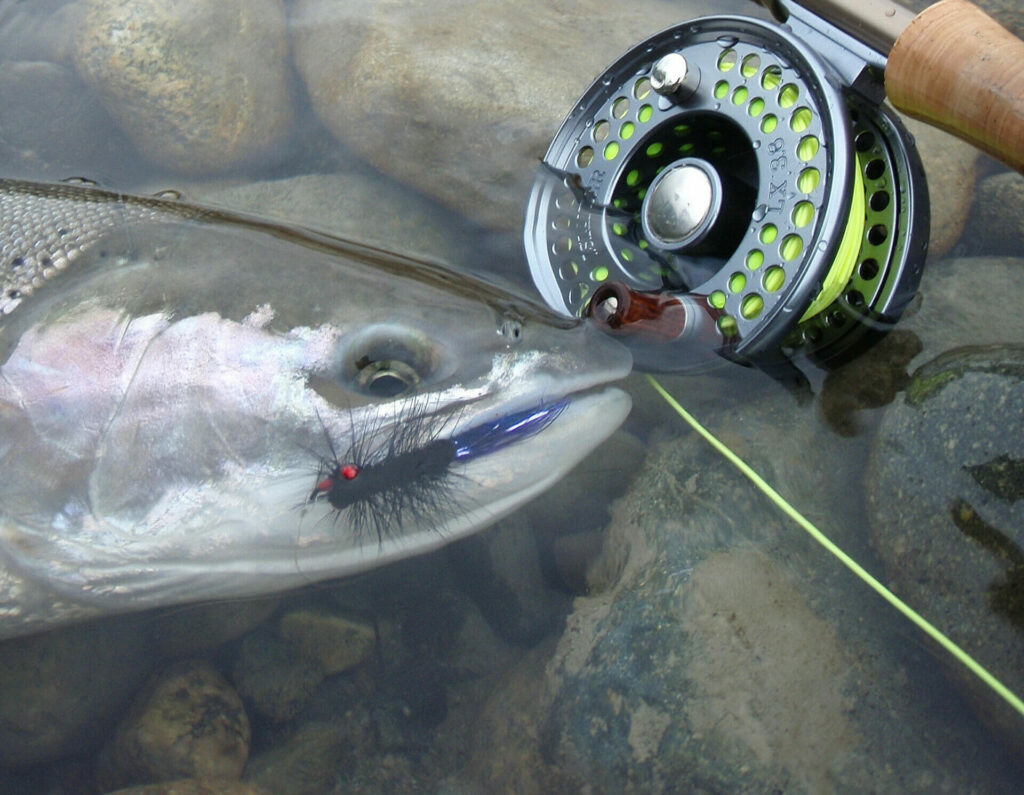
When pursuing steelhead, always consult the Freshwater Fishing Regulations before heading out to a river as they change annually depending on the body of water. A few of the more popular summer-run steelhead rivers include the Babine, Bulkley, Copper, Chehalis, Coquihalla, Dean, Kispiox, Skeena and the Thompson to mention a few. There are also many good steelhead rivers on Vancouver Island for those willing to do a little exploring. Steelheading is one of the most addictive fisheries in BC. Once you hook and land your first fish you will be hooked for life.
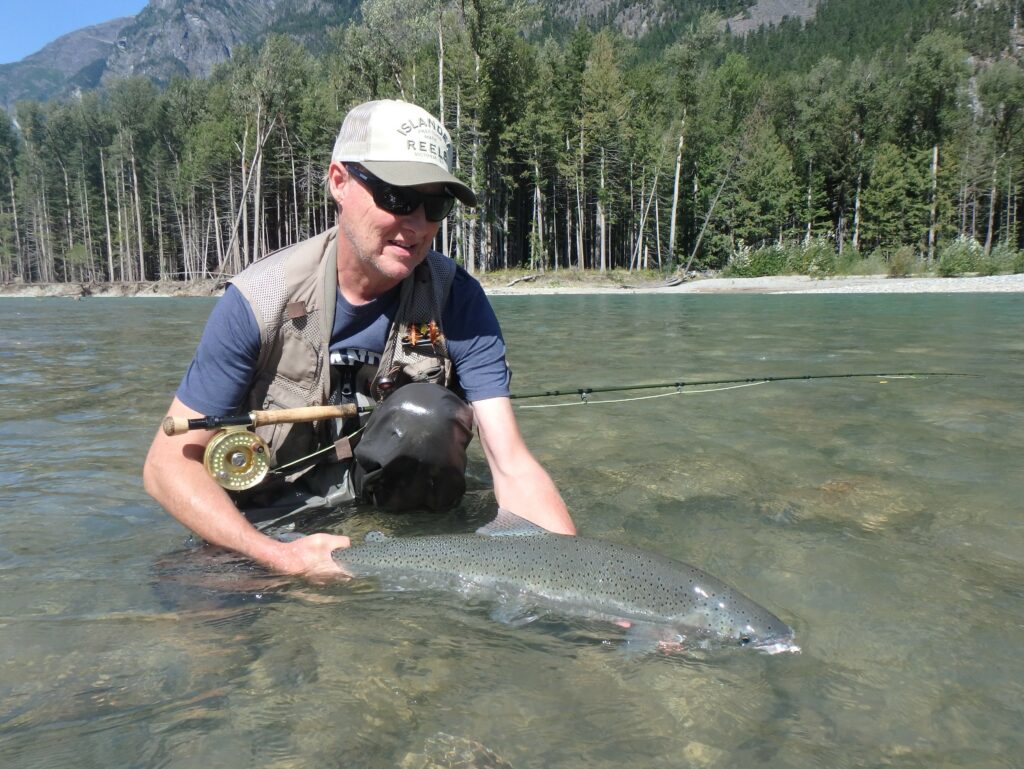
Tom Johannesen
Tom Johannesen grew up fishing but at the age of 23 he had his first article published in a British Columbia Federation of Fly Fishers (BCFFF) newsletter and something changed.
Since that first article, Tom has been on a mission to master his craft and to share what he has learned with others. With over 200 articles published in magazines like BC Sport Fishing, BC Outdoors, Outdoor Edge, Canadian Fly Fisher, Home Waters, Reel Angler, Western Angler and Island Fisherman, it’s clear that it’s a mission he takes seriously. He also regularly hosts seminars and tutorials at fly clubs and shops in the hopes of lighting that spark in the next generation.


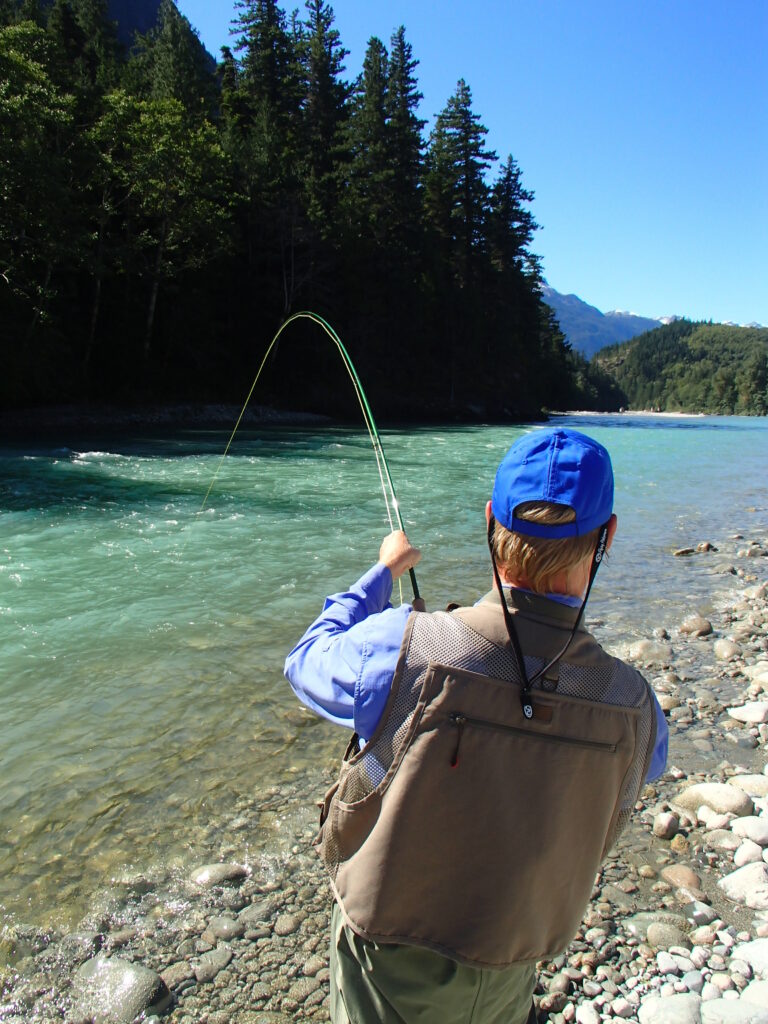
Is it the DEAN?
Yes, many of the images were shot on the Dean.